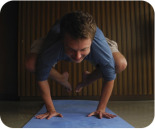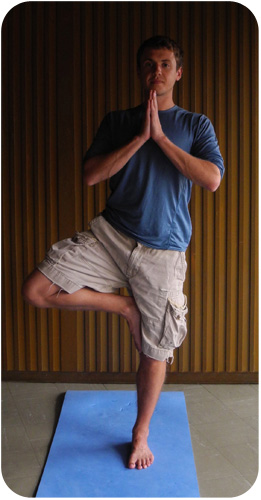Yoga: Correcting the Sedentary Lifestyle
 Wednesday, March 16, 2011 at 09:44PM
Wednesday, March 16, 2011 at 09:44PM II. 46 Posture should be steady and comfortable.
II. 47 [Such posture should be obtained] by the relaxation of effort and by absorption in the infinite.
II. 48 From this, one is not afflicted by the dualities of the opposites
-From The Yoga Sutras of Patañjali, by Edwin F. Bryant
 In these three sutras, Patañjali summarizes the implementation of asanas, or postures, that aspect of the Indian discipline of yoga most readily recognized by non-practitioners. Originally developed to keep a yogi’s body fit and healthy so that he could spend the rest of his day seated in deep concentration, seeking with his mind the ultimate goal of his yogic practices, illumination, asanas are now performed by millions of Americans for their health benefits.
In these three sutras, Patañjali summarizes the implementation of asanas, or postures, that aspect of the Indian discipline of yoga most readily recognized by non-practitioners. Originally developed to keep a yogi’s body fit and healthy so that he could spend the rest of his day seated in deep concentration, seeking with his mind the ultimate goal of his yogic practices, illumination, asanas are now performed by millions of Americans for their health benefits.
At the beginning of the yoga documentary Enlighten Up! a variety of opinions regarding yoga’s age is presented by prominent American yogis, with the range falling between 40,000 and 2,000 years old. But, according to the book Yoga in the Modern World, an excerpt of which is found at The Magazine of Yoga’s website, yoga as we know it in the United States is a relatively recent creation, which for most practitioners takes the form of Modern Postural Yoga (MPY).
Whereas traditional yoga consists of restrictions regarding behavior and habits, a focus on breathing and postures, and an overwhelming preoccupation with the perfection of mental concentration, MPY consists solely of asanas and measured breathing, followed by a brief period of either meditation or deep relaxation. If we think of traditional yoga as a rigorous discipline whose final aim is enlightenment, then MPY could be viewed as yoga-lite, or “householder yoga,” yoga for those who want to enjoy the discipline’s remarkable health benefits without having to set foot on its spiritual path and so perhaps leave behind their cherished human conditions.
 Recently, the health benefits of MPY have been getting increasing attention from both the US media and medical researchers. April 2009’s Harvard Mental Health Letter states, “Available reviews of a wide range of yoga practices suggest they can reduce the impact of exaggerated stress responses and may be helpful for both anxiety and depression,” while a New York Times article covers the use of MPY to aid in fertility treatments, and a post on the blog Cure Talk lists over thirty clinical studies of yoga that were active in 2010. Among the disorders studied in these trials were metabolic syndrome, post-traumatic stress disorder, arthritis, high blood pressure, and fibromyalgia.
Recently, the health benefits of MPY have been getting increasing attention from both the US media and medical researchers. April 2009’s Harvard Mental Health Letter states, “Available reviews of a wide range of yoga practices suggest they can reduce the impact of exaggerated stress responses and may be helpful for both anxiety and depression,” while a New York Times article covers the use of MPY to aid in fertility treatments, and a post on the blog Cure Talk lists over thirty clinical studies of yoga that were active in 2010. Among the disorders studied in these trials were metabolic syndrome, post-traumatic stress disorder, arthritis, high blood pressure, and fibromyalgia.
From my own experience with MPY, its greatest benefit has been increased awareness. We often seek quick fixes to the problems that plague us, and so fall prey to fad diets and exercises, which provide temporary solutions for difficulties that eventually reappear when we return to our old habits. As my mental and physical awareness has been increased by my MPY practice, I’ve become more aware of the patterns of behavior that predispose me to my problems, like poor-eating or self-doubt. Then, by altering these patterns of behavior at their source, myself, the difficulties that they cause are at first lessened, and then, with further effort, they disappear entirely, and also, it appears, permanently.
Although it might not be Paleo in the strictest sense given the recentness of its development, a regular MPY practice can be an excellent method for correcting the negative effects that a sedentary lifestyle can have on our physiques. Like the yogis, practitioners of MPY do asanas to prepare their bodies to spend the rest of the day seated at work, but, unlike the yogis, they’re not trying to leave the mortal world behind; they’re just trying to make a living.
Posted by John Michael
 The Yoga Sutras of Patañjali,
The Yoga Sutras of Patañjali,  Yoga in
Yoga in  Rejuvenation
Rejuvenation 

Reader Comments